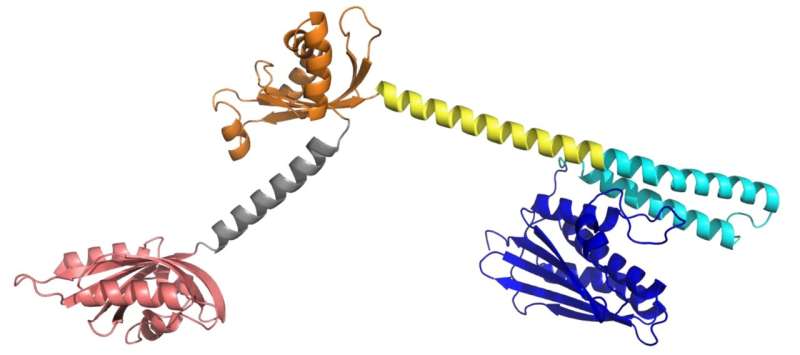This article has been reviewed according to Science X's editorial process and policies. Editors have highlighted the following attributes while ensuring the content's credibility:
fact-checked
peer-reviewed publication
trusted source
proofread
Supporting increased crop growth by regulating the expression of genes that support nitrogen fixation

An article describing research conducted by John Peters, Ph.D., chair of the Department of Chemistry and Biochemistry, Dodge Family College of Arts and Sciences at the University of Oklahoma, and fellow researchers, has been published in the journal Proceedings of the National Academy of Sciences.
The article "Structural insights into redox signal transduction mechanisms in the control of nitrogen fixation by the NifLA system" explores the way bacteria regulate the expression of genes related to nitrogen fixation—the conversion of nitrogen in the air into ammonia that can help plants grow.
"Using small angle X-ray scattering and mass spectrometry-coupled surface labeling, we revealed how a protein can sense the levels of oxygen, nitrogen and energy in the (plant's) cell and, in response, regulate the expression of genes that support nitrogen fixation," Peters said.
NifA is a protein that turns on these genes, while NifL is a protein that controls NifA by changing its shape in response to signals from the cell. Understanding the structure of NifL and how it changes in response to signals from the cell can help researchers develop new ways to engineer bacteria and biofertilizers in the form of ammonia in soils that can enable crop plants to grow better. With nitrogen composing 78% of the atmosphere, this could lead to a significantly improved yield, especially in poor soils.
"We are excited to see this article published because it answers a lot of questions about the way NifL works and enables a new line of research," Peters said. "It also illustrates how to obtain detailed structural information about proteins that are recalcitrant to more traditional methods for structure characterization."
More information: Nathaniel R. Boyer et al, Structural insights into redox signal transduction mechanisms in the control of nitrogen fixation by the NifLA system, Proceedings of the National Academy of Sciences (2023). DOI: 10.1073/pnas.2302732120
Journal information: Proceedings of the National Academy of Sciences
Provided by University of Oklahoma



















